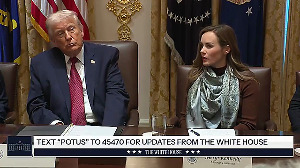Big cities may be the engines that are driving India's economic miracle machines, but it's still the laidback countryside where most of the subcontinent's best hotels are found. Chief among them are the traditional palace resorts that have always been India's forte, but there's also a new breed of eco-lodges with a rustic south Asian chic.
Rural really does rule the Indian hospitality roost. Eight of the 10 properties on the Forbes Traveler 400 list of India's best hotels made their names either in charming small cities with an abiding sense of history or locations lost amid India's great outdoors.
In Pictures: India's 10 best hotels
- Also see: The Forbes Traveler 400 List
- Also see: The Forbes Traveler 400 Hotels by Regions
Wildflower Hall could be the single best place to stay in the Himalayas, a funky Alpine-style abode originally built as the mountain retreat of British war hero and statesman Lord Kitchener. Set on a heavily wooded ridge near the old British hill station of Shimla, the sprawling manse has been thoroughly reworked in recent years into a stunning small hotel. Perched at more than 8,000 feet, Wildflower offers instant access to hiking, mountain biking and equestrian trails, as well as whitewater rafting, trout fishing and even snow sports in winter.
At the opposite end of the Indian nature spectrum, the Oberoi Vanyavilas is an upscale jungle lodge on the outskirts of Ranthambhore Tiger Reserve, considered the best place in Asia to spot the big striped cats. The resort's luxury "tents" are a designer-savvy blend of traditional Indian design and new age amenities like wireless internet and satellite TV. But nobody lingers long in their rooms with the Indian jungle close at hand -- there are tigers, a menagerie of other Indian wildlife as well as secluded lakes and abandoned medieval forts.
The far western state of Rajasthan now flaunts one of the world's largest concentrations of opulent overnight digs. The region is particularly renowned for its fabulous palace hotels, genuine royal abodes transformed into luxury hotels where guests really are treated like rajahs and ranas. None is more stunning than the Taj Lake Palace in Udaipur, which floats like a white marble dream in the middle of Lake Pichola. Erected in 1746 by a powerful local maharana, the "Lady of the Lake" retains much of her bygone charm and beauty. The hotel's butler service is staffed by descendants of the royal retainers. Guests can arrange a romantic candlelight dinner on a genuine royal barge, and a fleet of vintage American cars (like the fire engine red 1947 Buick ragtop) can fetch guests from the airport or ferry them around town.
On the other hand, Amanbagh resort is a completely new creation, a dramatic desert palace on the grounds of the Maharajah of Alwar's pleasure garden and hunting lodge. The domed copulas and pink sandstone are straight out of the Mogul past, while the jade-colored infinity pool and full service luxury spa (with treatments from all around Asia) reflect a 21st-century sensibility.
In Pictures: India's 10 best hotels
- Also see: Asia's 50 Best Hotels
- Also see: Europe's 50 Best Hotels
India's sprawling metropolitan areas still lag behind the likes of Bangkok and Hong Kong when it comes to world-class hotels, but the Forbes Traveler 400 list does include two urban enclaves: Taj Mahal Palace & Tower in Mumbai and the Imperial in New Delhi. Perhaps it's no accident that both are throwbacks to the colonial past, rather than indications of the new, dynamic modern India.
Launched in 1903 along the waterfront of a city that was then called Bombay, the Taj Mahal Palace is a jumble of Moorish, Italian and Indian architecture filled with an even more eclectic blend of furniture and design ranging from Victorian antiques and Chinese ceramics to wacky "Age of Aquarius" décor that wouldn't look out of place in Vegas. Opened three decades later, the Imperial is a whitewashed Art Deco gem that seems equally lost in time and space.
It's no surprise that Oberoi properties comprise fully half of our top Indian selections. The subcontinent's premier luxury group was founded by namesake Mohan Singh Oberoi, who started his hospitality career in the 1920s as a lowly clerk at the Cecil Hotel in Shimla. He borrowed money from relatives and used all of his savings to purchase his own hotel, a modest venture that laid the foundation for a hotel empire that now encompasses Asia, Africa and the Indian Ocean.
Like the pleasure palaces that now bear his name, Mr Oberoi -- who died in 2002 at the age of 103 -- personified the can-do spirit and commercial panache that fuels modern India.
In Pictures: India's 10 best hotels
- Also see: Best Hotel Cities






